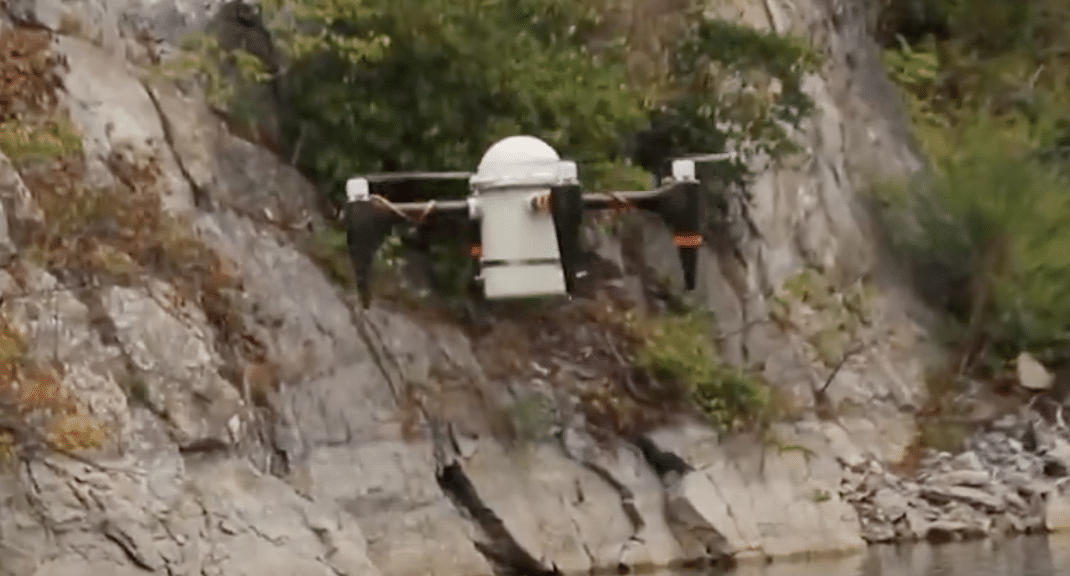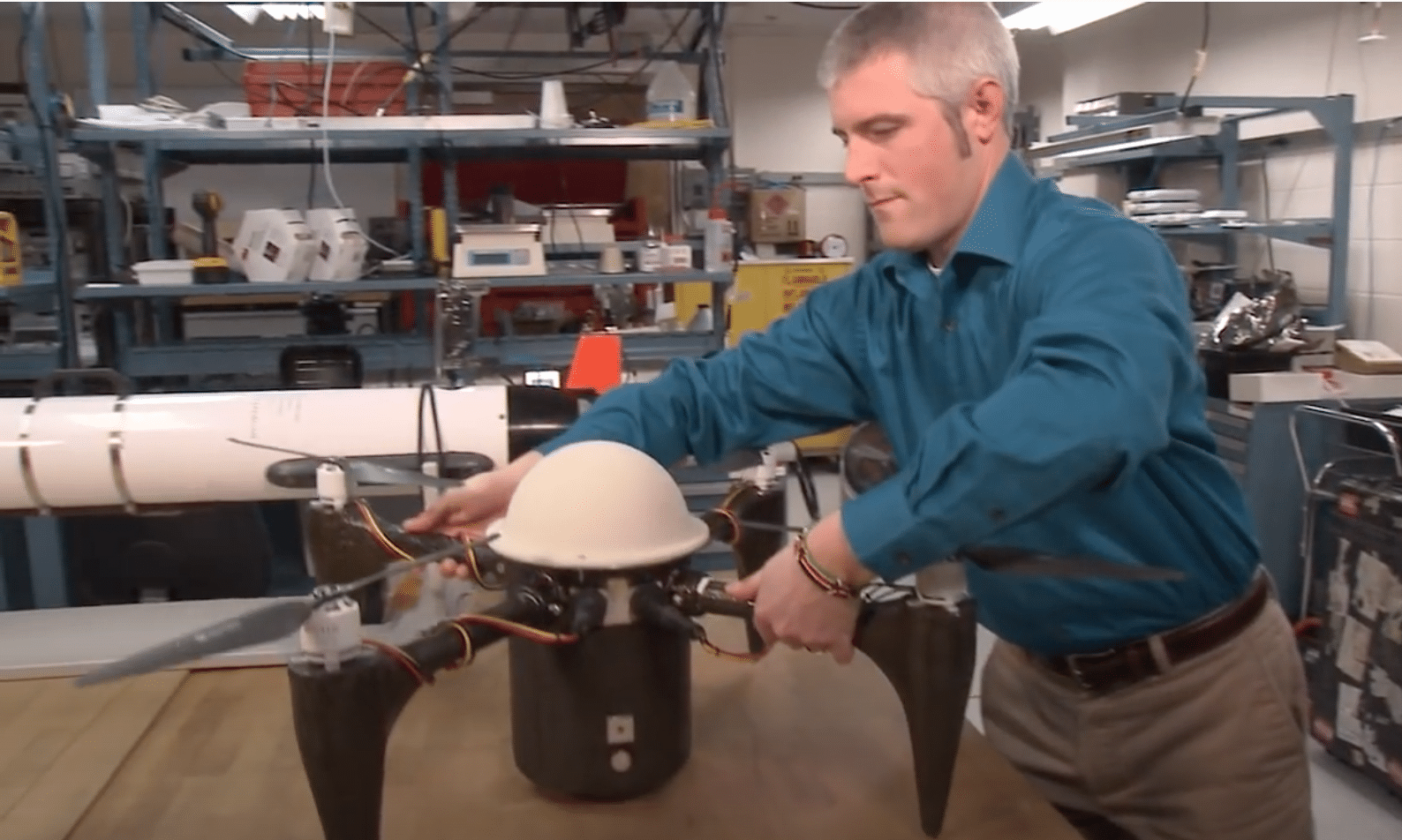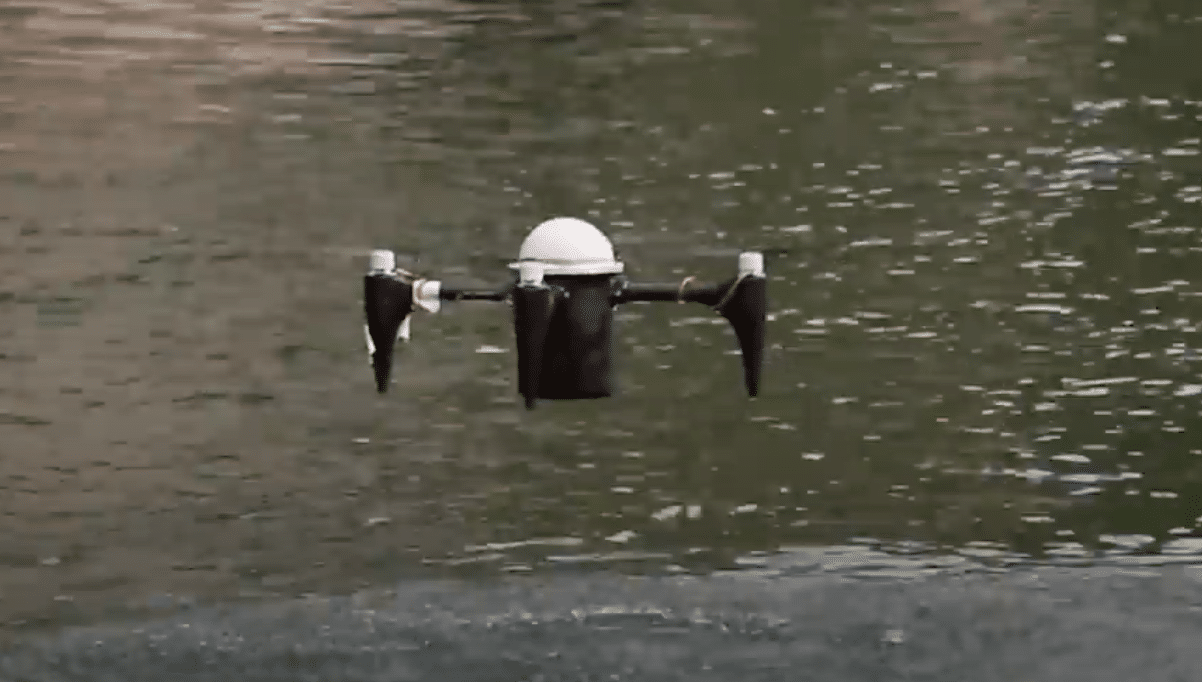Researchers at Johns Hopkins University developed a new dual-purpose drone in that they hope will change the way militaries think of UAVs. Their new prototype can both fly and swim, and it can even stay submerged in the water for months at a time waiting for the perfect opportunity to strike.
The team behind it recently put together a demo video in 2016 that explains how they created the drone and what they hope it might be used for in the near future.
Check it out in the video below:
The team named the new drone CRACUNS, the corrosion-resistant aerial covert unmanned nautical system. The name itself pretty much gives everything away – this new drone can be used both as an unmanned aerial vehicle (UAV) and as a hidden submersible.
According to one engineer, the project is the result of combining innovations from both Navy submarines and autonomous vehicles.
“We were inspired to develop a vehicle that would operate both underwater and in the air,” the engineer says in the video. “The result is this submersible UAV that can be launched from an unmanned underwater vehicle.”

Researchers at the Johns Hopkins University Applied Physics Laboratory in Laurel, Maryland, have developed an innovative unmanned aerial vehicle (UAV) that can stay on station beneath the water, then launch into the air to perform a variety of missions. (JHU Applied Physics Laboratory/YouTube)
The drone can remain at and launch from a depth of several hundred feet below the water. To achieve this feat, the team needed to solve two main problems.
The first was developing components that could be manufactured in a cost-effective way while simultaneously offering the functionality to sustain the drone underwater. To solve this problem, engineers relied heavily on 3-D printing to produce components that were inexpensive but could also fit their needs.

Researchers at the Johns Hopkins University Applied Physics Laboratory in Laurel, Maryland, have developed an innovative unmanned aerial vehicle (UAV) that can stay on station beneath the water, then launch into the air to perform a variety of missions. (JHU Applied Physics Laboratory/YouTube)
Once the design and functionality of the drone was covered, the team turned to solve the problem of reliability. After all, the UAV needed to not only remain submerged for long periods of time, but had to ward off saltwater, debris and other factors in the meantime while remaining fully functional.
To ensure the drone could handle the elements, the team developed a special coating that protected the critical components. After two months submerged in saltwater during testing, CRACUNS emerged unharmed and ready to fly.

Researchers at the Johns Hopkins University Applied Physics Laboratory in Laurel, Maryland, have developed an innovative unmanned aerial vehicle (UAV) that can stay on station beneath the water, then launch into the air to perform a variety of missions. (JHU Applied Physics Laboratory/YouTube)
While CRACUNS remains a prototype for now, the team envisions its use in countless military situations. The project was even recently recognized for its innovations by Secretary of the Navy Ray Mabus.



